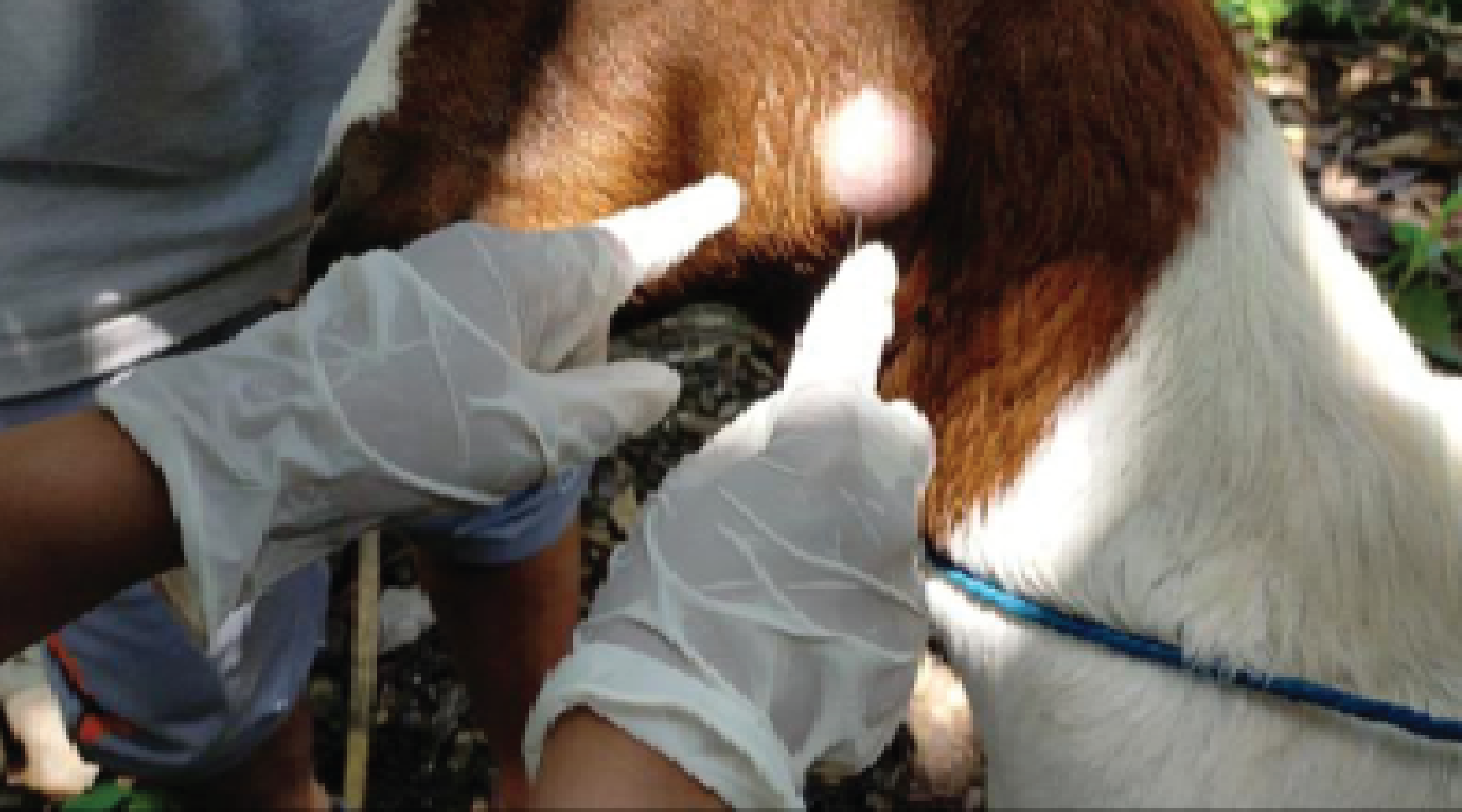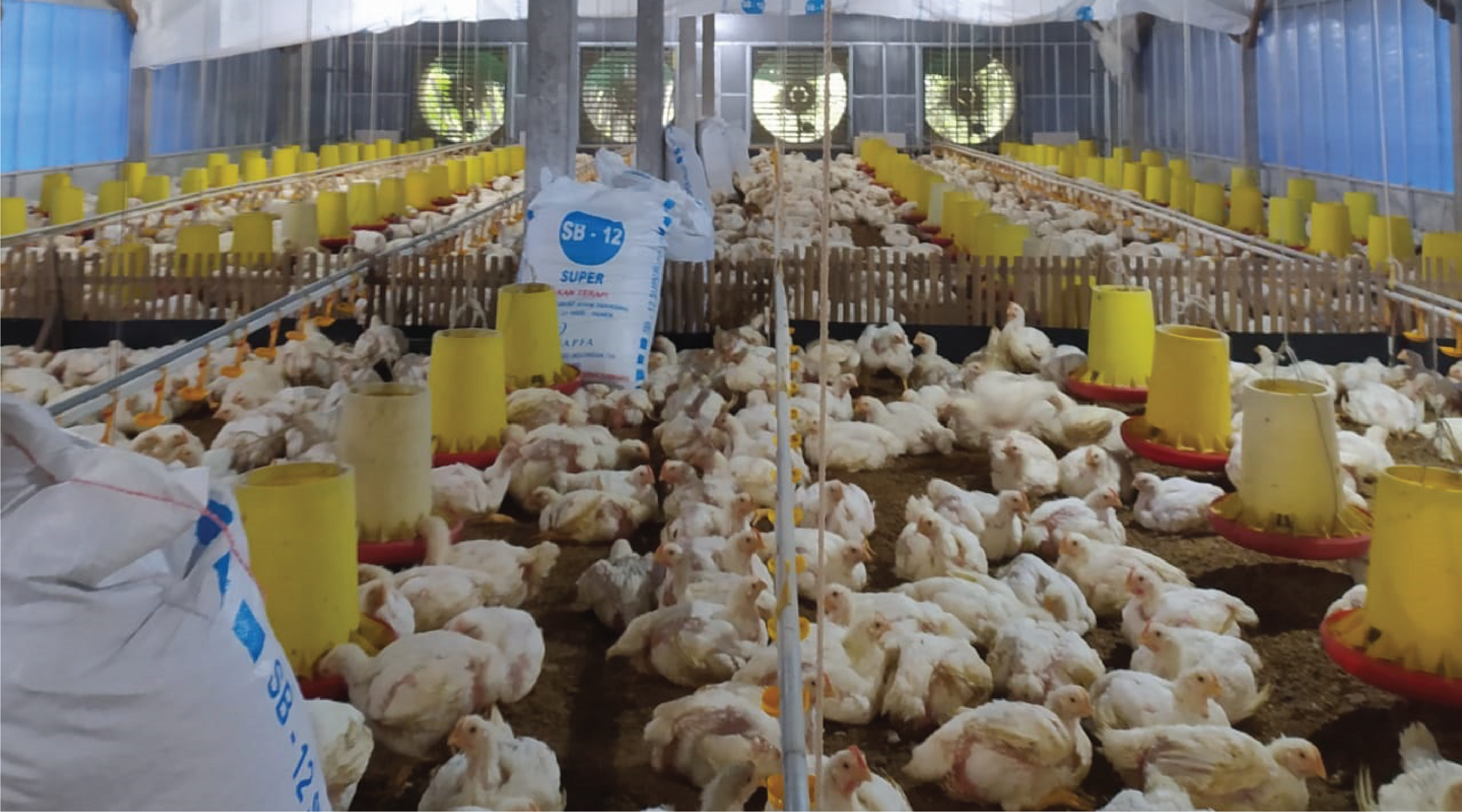Management of Digit Papillomas in Golden Retriever Dogs

Downloads
Background: Papillomas are benign tumors that affect the skin or soft tissue beneath the skin. These papillomas can be accompanied by various abnormalities such as pustules, itching, hematomas, cysts, blisters, abscesses, lick granulomas, and skintags. While papillomas may resolve on their own, some cases require intensive treatment and management. Purpose: To provide veterinarians with insights into diagnosing and managing papilloma cases. Case: A 10-year-old male Golden Retriever presented with an open wound on the left front paw nail. The wound originated from a broken nail, which led to a non-healing wound over a period of 2 months. Clinical examination revealed a mass-like lesion that had ruptured. Palpation of the left front paw nail area indicated an irregular, lobular growth resembling grapes or cauliflower. Case Management: Routine hematology revealed that the dog had microcytic hypochromic anemia, while blood chemistry indicated mildly reduced kidney function. Cytology confirmed that the wound was a papilloma. Treatment involved digit amputation to completely remove the tumor mass, along with wound care that included the application of ointments, antibiotics, analgesics, hematopoietic agents, anti-bleeding medication, and anti-cancer drugs. Supportive treatment included multivitamins, nerve supplements, immune supplements, and skin and coat supplements (Coatex). By the fifth postoperative day, the wound had dried, and the edges were healing well. Conclusion: Papillomas are benign and not harmful, but it is recommended to completely remove the tumor mass to prevent secondary infections.
Boehm, T.M.S.A., Bettenay, S., Bomhard, W., Majzoub-Altweck, M., Klinger, C.J., and Mueller, R.S., 2021. A Case Series of Canine Cutaneous Inverted Papilloma With One Case Showing Evidence of Recurrence. Veterinary of Dermatology, 32(3), 268-274.
Bronden, L.B., Eriksen, T., and Kristensen, A.T., 2010. Mast Cell Tumors and Other Skin Neoplasia in Danish Dogs. Acta Veterinaria Scandinavica, 52(1), 1-6.
Edinoff, A.N., Kaplan, L.A., Khan, S., Petersen, M., Sauce, E., Causey, C.D., Cornett, E.M., Imani, F., Moghdam, O.M., Kaye, A.M., and Kaye A.D., 2021. Full Opioid Agonists and Tramadol: Pharmacological and Clinical Considerations. Anesthesiology and Pain Medicine, 11(4), e119156.
Fulmer, A.K., and Maulidin, G.E., 2007. Canine hHistiocytic Neoplasia. Canadian Veterinary Journal, 48(10), 1041-1050.
Goldschmidt, M. H., Kennedy, J.S., Kennedy, D.R., Yuan, H., Holt, D. E., Casal, M. L., Traas, A. M., Mauldin, E.A., Moore, P.F., Henthorn, P.S., Hartnett, B.J., Weinberg, K., Schlegel, R., and Felsburg, P.J., 2006. Severe Papillomavirus Infection Progressing to Metastatic Squamous Cell Carcinoma in Bone Marrow-Transplanted X-linked SCID Dogs.Virology, 80, 6621–6628.
Gould, A.P., Coyner, K.S., Trimmer, A.M., Tater, K., and Rishniw, M., 2021. Canine Pedal Papilloma Identification and Management: A Retrospective Series of 44 Cases. Veterinary Dermatology, 32(5), 509–141.
Iyori, K., Inai, K., Hidekatsu, S., Haga, T., Shimoura, H., Imanishi, I., Imai, A., and Iwasaki, T., 2019. Spontaneous Regression of Canine Papillomavirus Type 2-Related Papillomatosis on Footpads in A Dog. Journal of Veterinary Medical Science, 81(6), 933-936.
Marchegiani, A., Fruganti, A., Spaterna, A., and Vedevo, E.D., 2020. Impact of Nutritional Supplementation on Canine Dermatological Disorders. Veterinary Science, 7(2), 38.
Medeiros-Fonseca, B., Faustino-Rocha, A.I., Mederos, R., Olivieira, P.A., and Gil Da Costa, R.M., 2023. Canine and Feline Papillomaviruses: An Update. Frontiers in Veterinary science, 10, 1-7.
Monge, K.M., Domene, S.S., Mendoza, D.L.D., Vidal-Gallardo, A., Llique, A.M.A., Rodriguez, M., Premchandra, P., Pandya, S.A., Arruarana, V.S., Paredes, K.A., and Martinez, E.C., 2024. Effectiveness of Tranexamic Acid in Trauma Patients: A Systematic Review. Cureus, 16(1), e52111.
Munday, J.S., Thomson, N.A., and Luff, J.A., 2017. Papillomaviruses in Dogs and Cats. Veterinary Journal, 225, 23–31.
Naomi, S., Prabowo, H., and Kurniawan, A., 2019. Faktor-Faktor Yang Memengaruhi Penyembuhan: Faktor Lokal, Faktor Tubuh Hewan, dan Lingkungannya. Jurnal Veteriner dan Ilmu Kesehatan Hewan, 12(4), 201-208.
Orlandi, M., Mazzei, M., Vascellari, M., Melchiotti, E., Zanardello, C., and Verin, R., 2021. Localization and Genotyping of Canine Papillomavirus in Canine Inverted Papillomas. Journal of Veterinary Diagnostic Investigation, 33(6), 1069–1078.
Reis, J.D.R., and Batista, M.V.A., 2022. New Insights into Canis Familiaris Papilloma Viruses Genetics and Biology: Is the Genetic Characterization of CPV Types and Their Variants an Important Clinical Issue?. Genetics and Molecular Biology, 45(3), 1-11.
Rich, N., Duclos, D., and Yuan, H., 2021. Management of Severe, Progressive Oral Papillomatosis in a Dog With CO2 Laser Ablation and Canine Papillomavirus L1 Immunisation. Veterinary Record Case Reports, 9(4), e168.
Sabattini, S., Bassi, P., and Bettini, G., 2015. Histopathological Findings and Proliferative Activity of Canine Sebaceous Gland Tumours with a Predominant Reserve Cell Population. Journal of Comparative Pathology, 152 (2–3), 145–152.
Schalm, O.W., 2010. Veterinary Hematology. 6th ed. Philadelphia: Lea and Febriger.
Smiech, A., Kamila, B., Wojciech, L., and Agata, P., 2023. Incidence and Risk of Occurrence of Benign and Malignant Canine Skin Tumours in Poland- a five- Year Retrospective Study. Journal of Veterinary Research, 67(3), 437-446.
Sudisma, I., Putra, M., Widianto, S., 2016. Penanganan Tumor Dengan Eksisi Total. Jurnal Medis Indonesia, 30(2), 45-50.
Uwagie-Ero, E.A., Abiaezute, C.N., Aimienwanlen, O.E., and James, O.A., 2017. Management of Canine Papillomatosis Using Oral Acyclovir – A Case Report. International Journal of Veterinary Science, 6(4), 187-190.
Wang, Z., Qi F., Luo, H., Xu, G., and Wang, D., 2022. Inflammatory Microenvironment of skin Wounds. Frontiers in Immunology, 13(1), 1-17.
Copyright (c) 2025 Authors

This work is licensed under a Creative Commons Attribution-ShareAlike 4.0 International License.
- The journal allows the author to hold the copyright of the article without restrictions.
- The journal allows the author(s) to retain publishing rights without restrictions.
- The legal formal aspect of journal publication accessibility refers to Creative Commons Attribution Share-Alike (CC BY-SA).

Journal of Applied Veterinary Science and Technology is licensed under a Creative Commons Attribution-ShareAlike 4.0 International License





























